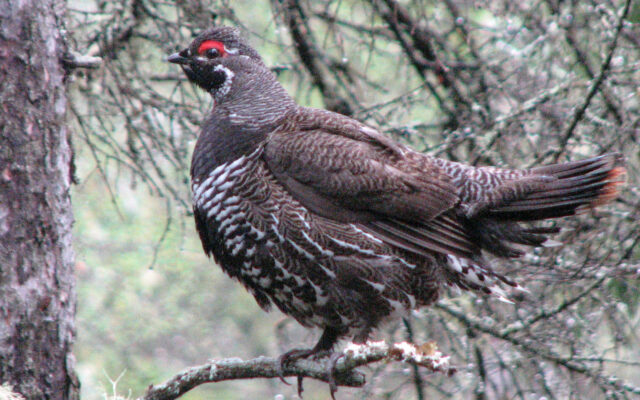
Milo Garden Club welcomes Duchesne
MILO — At Milo Garden Club’s April 9 meeting, members and guests enjoyed a presentation by Bob Duchesne who shared fascinating stories about birds and surprising facts about Maine.
Duchesne is truly a life-long bird enthusiast. Witnessing, at an early age, the beauty of goldfinches flocking together on shimmering, dewy grass, inspired within him a passion to learn everything he could about birds. That passion has never waned and is obvious to audiences who attend his presentations or join him on birding adventures. Walking with him through forests, along shorelines, blueberry fields or wetlands, listeners are amazed at how quickly he identifies birds by sight or song.
Maine is a place of respite for migrating birds and a summer home for others. They nest on rocks along the coast and find food in the Gulf of Maine. There, you might see a Northern Gannet Plunge-Dive for fish at a speed close to 60 miles per hour. Or, you can take the opportunity to view colonies of Atlantic puffins who summer in Maine; the only place in the United States that offers a habitat for puffins.
Nearly 89.5 percent of Maine is forest cover making Maine the most forested state in the United States. This includes the North Maine Woods and the Boreal Forest where boreal chickadees, Canada jays and black-backed woodpeckers are a few of the many birds that prefer the spruce trees found there. When speaking specifically about birds, the 3.5 million acres of the North Maine Woods hosts approximately 15 species of warblers, loons, flycatchers, nuthatches, wrens, and thrushes to name only a few of the many birds living and visiting there.
But, how did some of these habitats come to exist? Two prehistoric events were behind their creation. It all began 300 million years ago when the continents we know today formed one large land mass known as a supercontinent or Pangea. During this time, the mass destined to be Maine, was abutting the future land of Morocco. As the land masses moved apart, some characteristics of their former neighbors were carried with them. Of the New England states, Maine has the rockiest coastline. Morocco echoes that to a lesser degree on its Atlantic coast.
The ice age was another factor in Maine’s geological character. The shifting of massive ice sheets during glacial melting resulted in a tundra landscape, a characteristic of Down East Maine blueberry barrens. Not only does it make perfect growing conditions for blueberries, it is also an inviting habitat for upland sandpipers, vesper sparrows, snow buntings, and northern shrikes, to name a very few.
As Duchesne’s presentation came to a close, questions, and conversations followed, as did an invitation for him to visit again, soon. In the meantime, you can enjoy his column Good Birding in the Bangor Daily News or watch his videos on YouTube.
For more information about Milo Garden Club, please contact Victoria at 207-943-2400. You do not have to live in Milo to become a member.